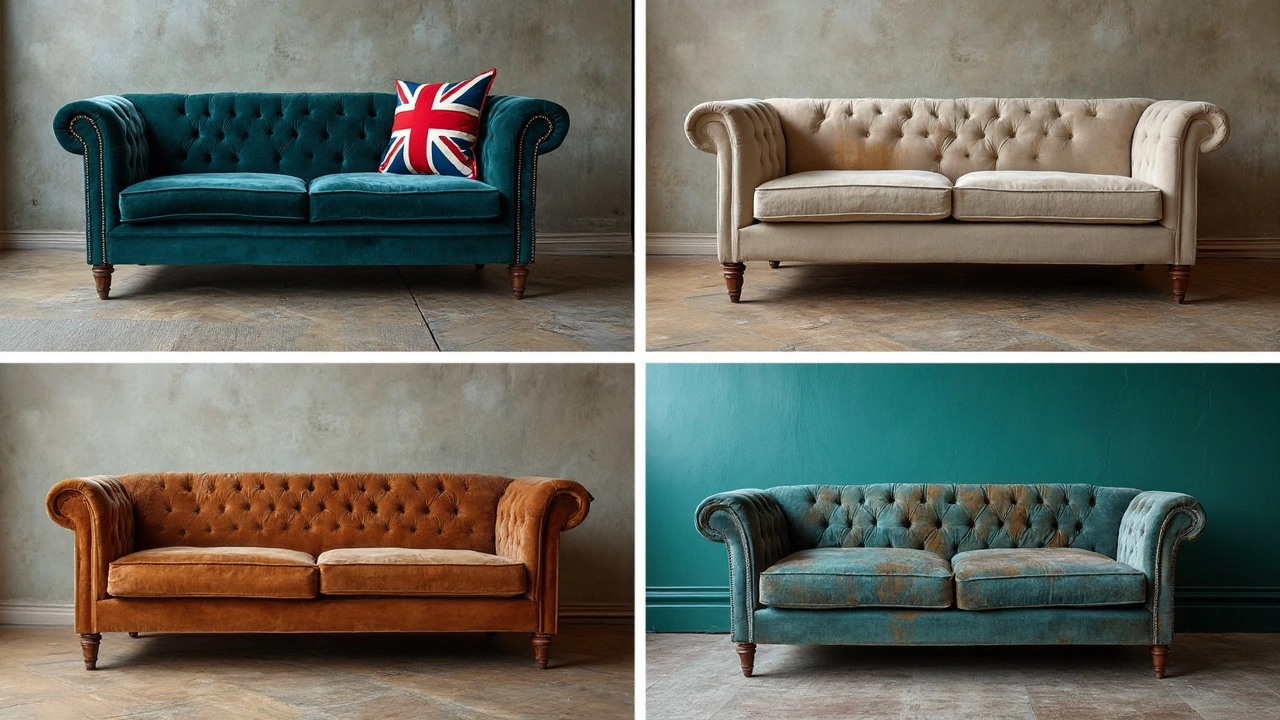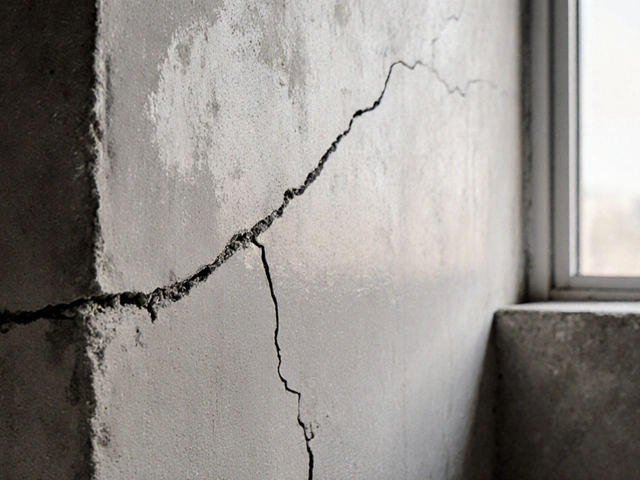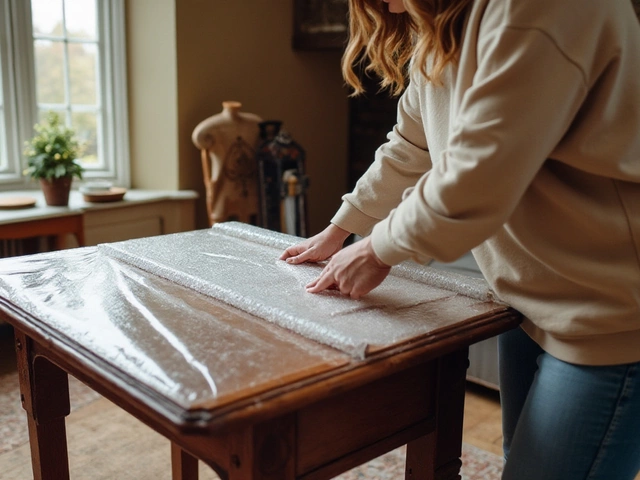Most people think a couch should last forever, but the average lifespan is really about 7 to 15 years. Of course, that’s an annoying range if you just dropped serious cash at a furniture store. But the truth is, how long your couch lasts comes down to what it’s made of, how often you use it, and straight-up how you treat it every day.
The number one killer of couches? Daily life. Kids using it as a trampoline, pets scratching and shedding, binge-watching sessions where the frame quietly groans under too much weight—it's those little things that add up fast. And yet, some sofas in the right homes with gentle use and simple habits seem to stick around forever. There are people out there still lounging on couches they got in the '90s. How does that happen?
- What Decides a Couch's Lifespan?
- Couch Materials: Which Lasts Longest?
- Signs It's (Past) Time to Replace
- Making Your Couch Go the Distance
What Decides a Couch's Lifespan?
If you're trying to figure out how long that beloved living room fixture will really stick around, a bunch of things play into the actual couch lifespan. It's not just about luck or picking something that looks cool in the showroom. Let's break down the biggest factors that make or break a sofa over time.
- Construction and Frame: The frame is the skeleton of your couch. Hardwood frames (like oak, maple, or birch) outlast softwoods and particle board by years, maybe even decades. If a sofa creaks right after you buy it, that's a red flag.
- Suspension and Springs: That saggy feeling after a couple of years? Blame bad springs or weak webbing. Eight-way hand-tied springs usually last longer than cheaper sinuous (zigzag) springs.
- Cushion Quality: High-density foam or a mix with down will hold its shape much longer. Cheaper foam flattens quick—sometimes in just a year or two if you use your couch a lot.
- Upholstery Material: Fabric matters. Microfiber resists stains and pet damage way better than linen or cotton. Leather can last decades if you keep it moisturized and watch for scratches. But all materials will eventually wear down, especially on daily-use sofas.
- Everyday Use: If your couch is the hot spot for everything and everyone, its days are numbered. More bodies, more jumping kids, more pizza nights—more wear and tear.
- Cleaning and Maintenance: Surprisingly, regular vacuuming and quick clean-ups help a ton. Dirt and crumbs grind away at fibers and stitching, quietly killing your sofa long before you notice.
Check out how some of these factors compare in actual years of durability:
| Factor | Lower-End Durability | Higher-End Durability |
|---|---|---|
| Frame Material | Particle Board: 3-5 years | Hardwood: 15+ years |
| Springs | Zigzag/Sinuous: 5-8 years | Hand-tied: 10-15 years |
| Cushion Filling | Cheap Foam: 2-3 years | High-density Foam: 7-10 years |
| Upholstery | Low-grade Fabric: 3-5 years | Leather/Microfiber: 10-20 years |
Every one of these details changes how long your couch lifespan stretches. Next time you’re thinking about buying a sofa, check the label, ask about frames and springs, and don’t fall just for looks—structure really does matter.
Couch Materials: Which Lasts Longest?
If you’re serious about buying a couch that’ll actually stand the test of time, start by looking at what it's made of. The sofa durability game is all about frames, cushions, and fabric—or leather if you’re feeling fancy (or brave with kids around).
Frame: Hands down, solid hardwood frames last the longest. We're talking real wood like oak, maple, or ash. Particleboard and plastic frames? Don’t expect more than five or six years tops out of those—usually less if you move a lot or have heavy users around.
Cushions: High-density foam cushions stick around the longest without sagging. Cheaper sofas use low-density foam that starts losing shape after just a year or two, especially if you're getting a lot of use. Down-filled cushions sound bougie but need constant fluffing and can flatten fast.
Upholstery: When it comes to fabric, microfiber is king. It's tough, stain-resistant, and holds up against pets, messy eaters, and just about anything you throw at it (literally). Leather sofas can last over 15 years if cared for, but they scratch easily and need regular cleaning. Linen and velvet feel great, but don’t expect them to handle rough treatment or crazy amounts of sunlight without fading or tearing.
| Material | Average Lifespan | Best For |
|---|---|---|
| Solid Hardwood Frame | 15+ years | Heavy use, families |
| Particleboard/Plastic Frame | 3-7 years | Temporary setups, light use |
| Microfiber Upholstery | 7-11 years | Pets, kids, messy homes |
| Leather Upholstery | 10-15+ years | Easy cleaning, long-term style |
| Linen/Velvet Upholstery | 5-8 years | Low-traffic, formal spaces |
So, if you want to stretch your couch lifespan, look for a sturdy hardwood frame, high-density foam, and tough, easy-clean fabrics. Higher upfront costs, but you’ll dodge the "time to replace my sofa already?!" drama for quite a few more years.

Signs It’s (Past) Time to Replace
It’s easy to ignore the signs when your couch lifespan is running out. But just because you’ve gotten used to those squeaky springs and saggy cushions doesn’t mean your sofa’s still got game. Recognizing when to finally say goodbye saves your back, your style, and sometimes even your wallet.
Here are the classic warning signs it’s time for a new sofa:
- Visible Sag, No Support: If the cushions slump so low you feel the frame—no amount of pillow fluffing will save it. Good support is key for comfort and, honestly, your spine.
- Frame Noises or Wobble: Any creaking, cracking, or wobbling means the inside skeleton is failing. Wood frames just don’t bounce back once they’ve started to break down.
- Torn or Worn Upholstery: Rips, stains that won’t budge, or fabric wearing thin are plain hard to ignore (and hard to hide from guests). This is especially true with cheaper fabrics where wear shows faster.
- Persistent Odors or Allergies: Cushions trap smells over years, and sometimes no cleaning will fix that. If you always smell “dog” or your allergies suddenly get worse in the living room, the sofa might be the culprit.
- Noisy Springs or Lumps: A comfy sofa shouldn’t poke you. If you can feel or hear the springs, or there are weird lumps, the inside is shot.
If you live with kids or pets, you’ll probably spot these signs even sooner. Most experts say if a couch is over 10 years old and you see three or more of these issues, it’s past its prime. Here’s a quick rundown of typical sofa survival times for different materials:
| Material | Average Lifespan (Years) |
|---|---|
| Solid Hardwood Frame | 10–15 |
| Plywood/Particleboard Frame | 5–7 |
| Leather Upholstery | 10–15 |
| Fabric Upholstery | 7–10 |
If your sofa durability doesn’t stack up, don’t feel bad—most people hold onto their old couches way too long, hoping to squeeze out another year. But when your couch hits rock bottom, it just makes sense to look for something new. Your living room (and your back) will thank you.
Making Your Couch Go the Distance
If you want your couch lifespan to hit the double digits, small shifts in day-to-day habits can work wonders. Regular cleaning actually makes a bigger difference than most people realize. Vacuum up crumbs and dirt every week, and you’ll keep fabric from wearing down, plus you get rid of stuff that attracts bugs.
Rotate and fluff those cushions! If you keep sitting in the same spot (or if your dog does), you’ll see sagging and lopsided shapes quick. Flip and switch them around every month or so. If you’ve got loose back pillows, give those a shake to keep them looking full.
Spills? Deal with them ASAP. A lot of couch fabrics can stain or even get weak if you let liquids hang around. Blot up messes, never rub, and use a gentle cleaner made for your couch’s material. If you’re up for it, toss the removable covers in the wash a couple times a year.
- Keep your couch out of direct sunlight to avoid faded, brittle fabric—this is a sneaky source of wear most people overlook.
- For homes with kids or pets, consider a couch cover. It’s way easier to clean or replace that than your whole sofa.
- If you hear creaking or feel wobbling, tighten screws and bolts. Small hardware checks keep the sofa durability in check.
Got leather? Use a leather conditioner once or twice a year to keep it from drying and cracking. And if you can, go for gentle, pH-neutral cleaning products whether you have fabric or leather. Harsh sprays break down fibers and shorten that couch lifespan.
A quick look at a basic care routine for a standard family sofa:
| Task | How Often |
|---|---|
| Vacuum & surface clean | Weekly |
| Spot clean spills | Immediately |
| Rotate cushions | Monthly |
| Deep clean | Every 6-12 months |
| Check hardware/legs | Every 6 months |
| Leather conditioning (if needed) | Twice a year |
Following these simple tips can keep your couch lifespan at the top end of the scale. The effort is minor compared to shopping for a new sofa every five years.








